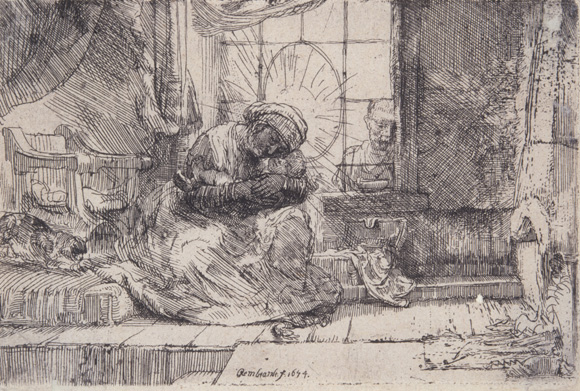Rembrandt Exhibit Offers Glimpse of 17th-Century Dutch Life
Contributed By By Jason Swensen, Church News staff writer

Viewers of the ongoing exhibit Rembrandt’s Amsterdam are offered a glimpse of the lives of common Dutch people during the 17th century. Demand was high for Rembrandt’s etchings thanks to a thriving middle class that supported his work.
Article Highlights
- To mark the first decade of the Center for the Study of Europe, BYU’s Museum of Art is exhibiting a selection of prints by Rembrandt.
- Rembrandt created many etchings of working-class citizens of Amsterdam that give a glimpse of the lives of common Dutch people during the 17th century.
- Rembrandt’s Amsterdam will run through April. Admission to the museum and exhibit is free.
"Rembrandt always painted people just as common people. He didn’t idealize his figures. They often weren’t very beautiful, but they were human." —Dawn Pheysey, BYU-MOA curator
Related Links
PROVO, UTAH
To mark the first decade of Brigham Young University’s Center for the Study of Europe, the Church-owned school is exhibiting a selection of prints by the Dutch master Rembrandt van Rijn.
Rembrandt’s Amsterdam is on display at the school’s Museum of Art, offering visitors a glimpse of 17th-century Dutch life. The artist was skilled at being able to capture the day-to-day lives of common, working-class residents of the great Dutch city. He embraced the dignity found in the regular lives of his fellow Dutchmen and women.
“Rembrandt always painted people just as common people,” said curator Dawn Pheysey in a museum release. “He didn’t idealize his figures. They often weren’t very beautiful, but they were human. He was never condemning of people or their plights in life resulting from poor choices. He was always sympathetic to people and their circumstances.”
The artist was fortunate to live in Amsterdam when it was the richest city in the world. Such prosperity spawned a thriving, highly literate middle class who could afford—and appreciate—fine art, according to the museum. The print market was accessible to many in the city, and Rembrandt had the savvy to produce such prints.
“Artists began to specialize in certain areas and sold smaller works for the Dutch home,” said BYU art history professor Martha Peacock, who curated the exhibit. “Prints in particular were a cheap way of creating art that was affordable to everyone in the middle class.”
Rembrandt’s Amsterdam will run through April. In connection with the exhibit, the museum is hosting an evening of Dutch culture on April 1 from 5:00 to 7:30 p.m. Visiting musicians from Amsterdam will perform, and Professor Peacock will speak about Rembrandt and his printmaking.
The exhibit is made possible by a generous donation of etchings from the Malouf family of Texas. Pieces also come from the museum’s collection.
The BYU Museum of Art is located on the school’s Provo, Utah, campus. Admission for most exhibitions, including Rembrandt’s Amsterdam, is free.
Call 801-422-8287 for information about tours and other activities at the museum.

Etching captures everyday Dutch life in Rembrandt’s Amsterdam, an exhibit at the BYU Museum of Art. Images courtesy of BYU-MOA.

Rembrandt’s depictions of common, working-class people in his native land were popular in his etchings. Images courtesy of BYU-MOA.
